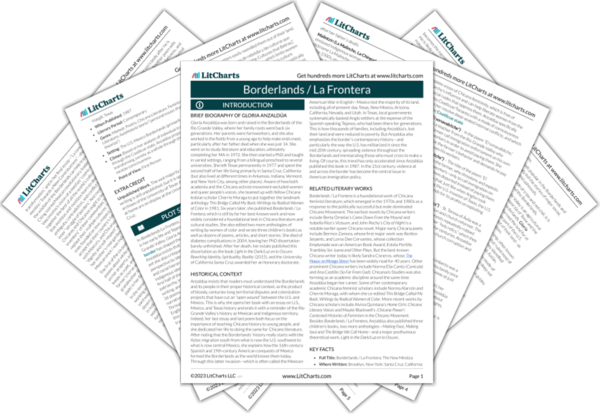Grounded in the particular sights and landscapes of the Borderlands, this poem (“Cactus-Woman”) develops an extended metaphor for Chicana women’s unique combination of adaptability, self-reliance, and intense local knowledge. This is particularly tied to their Indigenous roots and identity, which many prefer to deny. Anzaldúa’s cactus-woman transcends the boundaries between culture and nature, human and animal, ephemeral and eternal—she finds belonging in a hostile landscape where little else can thrive, then disappears without leaving a trace.
